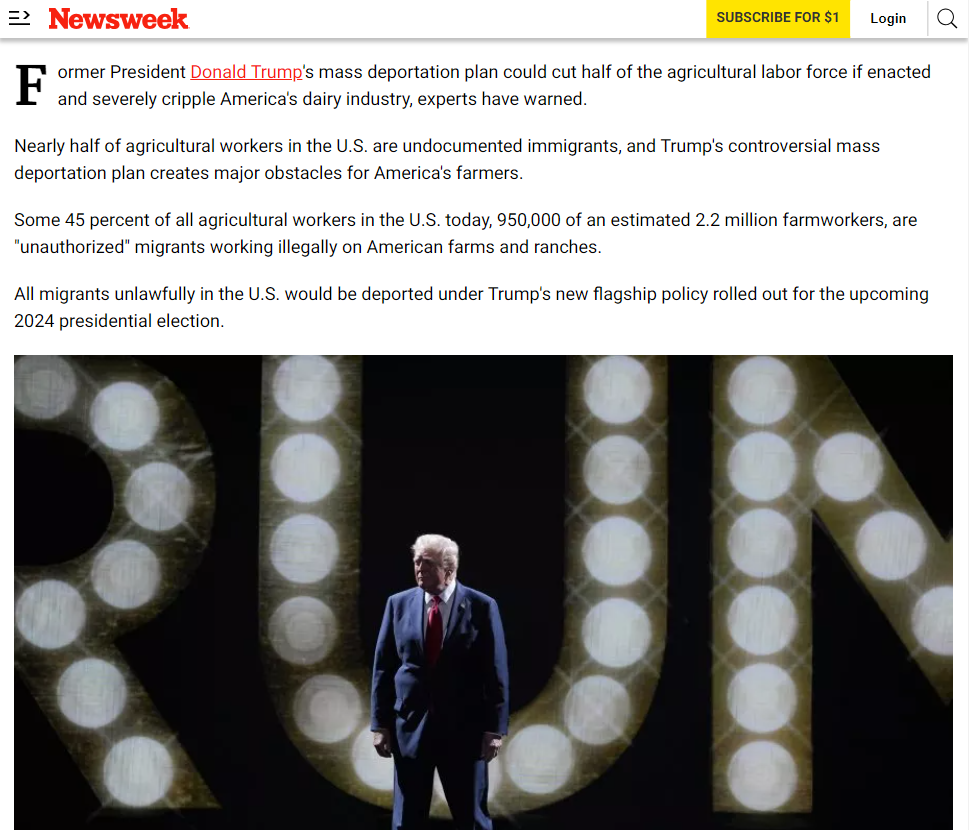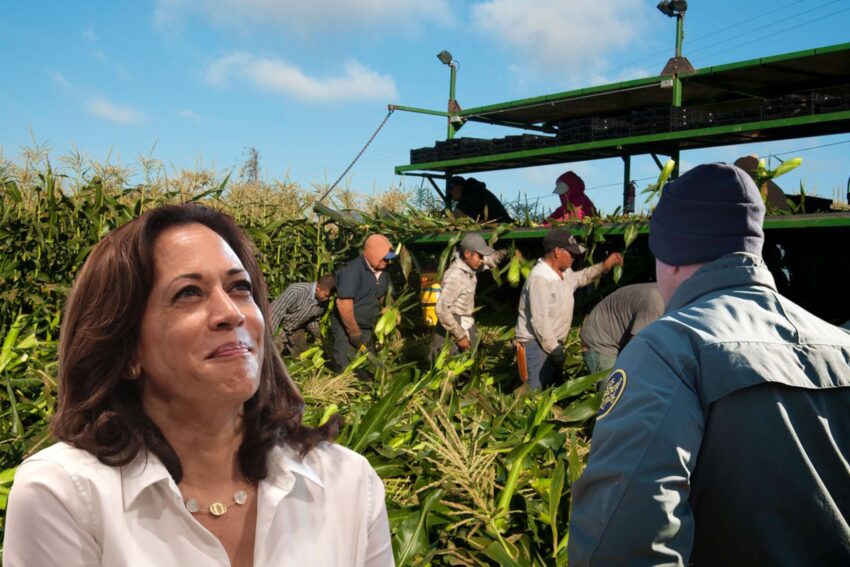The narrative surrounding labor in American agriculture has increasingly painted a picture of dire necessity, where the survival of the farming industry hinges on the influx of foreign workers. This portrayal, often amplified by mainstream ag media, suggests that without these workers, American farms, both small and large, would face economic ruin. The media pundits want us to believe that if illegal aliens are deported, all farming in America would grind to a halt. This has become a big talking point this election cycle.


However, a deeper analysis reveals a more nuanced reality, particularly when distinguishing between small family farms and large agribusinesses.
The Media’s Portrayal
Various mainstream media outlets (both ag and general news) have highlighted a labor crisis in U.S. farming. The use of foreign workers in agriculture is being used as a justification for why the United States should not secure its borders. Although many of the farm laborers in question are here illegally, the narrative often focuses on the H-2A visa program, which allows farmers to hire foreign workers for temporary or seasonal agricultural work. This program has been expanded due to reported labor shortages, but the media’s portrayal tends to generalize these needs across all farming operations, which misrepresents the situation for small farmers.
The Reality for Small Farmers
For small farmers, the labor issue is not merely about numbers but about the nature of work and economic viability. Unlike large agribusinesses, small farms often rely on family labor or local workers. The cost of hiring through programs like H-2A, which includes housing, transportation, and other benefits, can be prohibitively expensive for these operations. Moreover, small farms might not require the same volume of labor as industrial farms, where economies of scale make such programs more feasible.
Big Agribusinesses and Cheap Labor
The push for foreign labor is predominantly driven by large agribusinesses. These entities benefit from the H-2A program’s structure, which provides them with a workforce willing to accept lower wages and often poorer working conditions than might be acceptable to American workers. This scenario is not about a lack of American labor but rather about the economic model that favors cheap labor over investment in technology, automation, or better wages and conditions.
Again, it needs to be pointed out that these big agribusinesses are not just hiring H-2A workers, but also acting as the largest employer of illegal aliens. From These U.S. industries can’t work without illegal immigrants:

American Workers Are Being Replaced in General
🚨 Native-born workers lost 1.3 MILLION jobs in August while foreign-born workers gained 630K jobs.
Working-class Americans are being replaced.
Source: @zerohedge pic.twitter.com/WfpmBO9IvX
— Center for Renewing America (@amrenewctr) September 6, 2024
While the government touts robust job growth, the reality is skewed in favor of foreign-born individuals. New job opportunities are disproportionately filled by migrants, even as American citizens face job cuts or stagnation in employment growth.
When we say big corporations want open borders to hire cheap labor, it’s not a conspiracy theory
Look at these jobs numbers:
Americans have lost 663,000 jobs
Immigrants (mostly illegal) have gained 414,000
And this is just what the government admits to
It’s so much worse https://t.co/3qs47ZW1zJ
— DC_Draino (@DC_Draino) June 7, 2024
This scenario has sparked debates on immigration policy, job market dynamics, and the economic implications of such trends, with critics arguing that this could represent a form of labor replacement rather than the advertised job creation for all.
The Great Replacement of the American worker.
Last week's job report showed a shocking 1.3 million drop in jobs for native-born workers.
Replaced almost precisely by 1.2 million jobs for foreign-born workers — many in the country illegally. pic.twitter.com/oy9CrcNeLf
— Peter St Onge, Ph.D. (@profstonge) September 16, 2024
Economic and Social Implications
The reliance on foreign labor, as pushed by big agribusinesses, has several implications:
Wage Suppression: The influx of labor keeps wages low, which might not be an issue if working conditions were improved, but often, these workers face substandard conditions.
Local Displacement: While there’s a narrative of Americans not wanting farm work, this might be more reflective of the conditions offered rather than an unwillingness to work. Local workers might prefer other industries where conditions and wages are better.
Dependency: Creating a dependency on foreign labor might hinder innovation in farming practices or the development of more efficient labor models.
Conclusion
The media’s portrayal of a universal labor crisis in American agriculture oversimplifies a complex issue. While there is a genuine need for labor in certain sectors of agriculture, particularly in large-scale, labor-intensive crops, hiring needs to be done legally and these same needs do not universally apply to all farms. Small farmers face different challenges, where the economic model of large agribusinesses might not only be unsustainable but also detrimental to local economies and labor markets. Also, why should large agribusinesses be allowed to gain advantages through breaking laws by hiring illegal aliens (or “undocumented workers” if you prefer euphemisms)?
The narrative needs to shift towards a more nuanced understanding that supports efficient farming practices, fair wages, and decent working conditions for laborers. This would foster an agricultural sector that respects both its workers and the land, rather than one that’s solely dependent on the cheapest labor available, regardless of the impacts on local communities.


